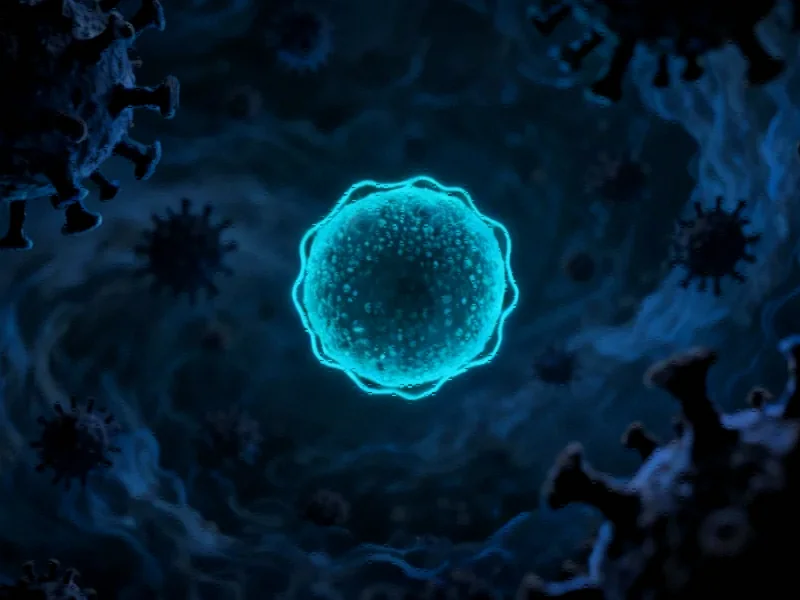Rethinking the Role of Plasmacytoid Dendritic Cells in Antiviral Immunity
For decades, plasmacytoid dendritic cells (pDCs) have been celebrated as the body’s first line of defense against viral invaders, primarily due to their unparalleled capacity to produce massive amounts of type I and III interferons (IFNs). These antiviral cytokines form a crucial barrier against pathogens, triggering complex immune responses that typically protect the host. However, emerging research published in Nature Immunology challenges this conventional wisdom, revealing a more nuanced and sometimes contradictory role for these specialized immune cells.
The Conventional Understanding of pDC Function
Plasmacytoid dendritic cells distinguish themselves through their unique ability to detect viral genetic material via the TLR7/9-MYD88-IRF7 signaling pathway. When this pathway activates, pDCs unleash a potent cocktail of all type I and III IFN subtypes, creating an antiviral state in surrounding tissues. This mechanism has positioned pDCs as essential warriors in our immune arsenal. The critical nature of this pathway is underscored by the fact that mutations in TLR7, TLR9, MYD88, or IRF7 genes completely abolish IFN production by pDCs.
Yet this established narrative begins to unravel when we examine clinical evidence from patients with these very mutations. Surprisingly, individuals lacking functional pDC signaling survive most viral infections, experiencing significant vulnerability only to specific pathogens like influenza virus and SARS-CoV-2. This paradox suggests that our understanding of pDC biology requires substantial refinement, particularly as research challenges essential role of immune cells in viral defense mechanisms.
Contradictory Evidence from Animal Models
The complexity deepens when we consider data from murine studies, where pDCs demonstrate strikingly variable functions depending on both viral strain and host genetics. In some experimental settings, pDCs appear beneficial, while in others they prove either dispensable or outright detrimental to host survival. These conflicting conclusions have emerged from studies using genetic knockouts or pharmacological inhibitors that affect multiple immune cell types beyond pDCs, potentially creating confounding effects that obscure the true biological picture.
This methodological limitation highlights the pressing need for more precise tools that specifically target pDCs without disrupting other immune components. As scientists develop increasingly sophisticated approaches to validate biological models, we’re gaining clearer insights into the precise contributions of individual cell types to complex immune responses.
Potential Harmful Effects of pDC Activity
The emerging concept of pDC “harmfulness” represents a significant paradigm shift in immunology. Under certain conditions, the very interferon responses that typically protect against viruses may become excessive, triggering destructive inflammation or suppressing the activity of other immune cells. This delicate balance between protective and pathological immunity reflects broader industry developments in understanding complex biological systems.
Furthermore, the context-dependent nature of pDC function suggests that therapeutic strategies aimed at modulating these cells must be carefully calibrated. Both excessive enhancement and complete suppression of pDC activity could produce unintended consequences, emphasizing the need for precision approaches to immune modulation that consider the latest technology advancements in biological engineering.
Methodological Challenges and Future Directions
Current limitations in pDC research methodology present significant obstacles to reaching definitive conclusions. Most existing tools for studying pDC function—including genetic models and pharmacological agents—lack the specificity needed to isolate pDC-specific effects from broader immune alterations. This methodological challenge parallels difficulties seen in other fields where researchers struggle to attribute outcomes to single variables within complex systems.
The path forward requires developing more sophisticated experimental approaches, potentially including:
- Conditional knockout models that selectively target pDCs without affecting other cell types
- Advanced imaging techniques to visualize pDC behavior in real-time during infection
- Single-cell analysis to understand functional heterogeneity within pDC populations
- Computational modeling to predict pDC responses across different infection scenarios
These methodological innovations reflect broader related innovations occurring across scientific disciplines, where precision tools are revolutionizing our ability to dissect complex biological processes.
Implications for Therapeutic Development
The revised understanding of pDC biology carries significant implications for treating viral diseases. Rather than universally boosting pDC activity, future therapies may need to strategically modulate these cells in a context-dependent manner. For certain viral infections, temporary enhancement of pDC function might be beneficial, while for others, selective suppression could prevent immunopathology.
This nuanced approach to immunotherapy represents an exciting frontier in infectious disease management, one that aligns with emerging market trends toward personalized medicine and precision therapeutics. As our understanding of immune cell biology continues to evolve, so too will our ability to harness these complex systems for therapeutic benefit.
Conclusion: Toward a More Nuanced Understanding
The story of plasmacytoid dendritic cells serves as a powerful reminder that biological systems rarely conform to simple narratives. What appears to be an essential defense mechanism in some contexts may prove redundant or even harmful in others. This complexity underscores the importance of continued research into the precise conditions that determine pDC function during viral infections.
As we move beyond simplistic classifications of immune cells as purely “beneficial” or “detrimental,” we open the door to more sophisticated therapeutic strategies that respect the contextual nature of immunity. The journey to fully understand pDCs—and indeed, the entire immune system—continues, promising new insights that will ultimately enhance our ability to combat infectious diseases.
This article aggregates information from publicly available sources. All trademarks and copyrights belong to their respective owners.
Note: Featured image is for illustrative purposes only and does not represent any specific product, service, or entity mentioned in this article.



